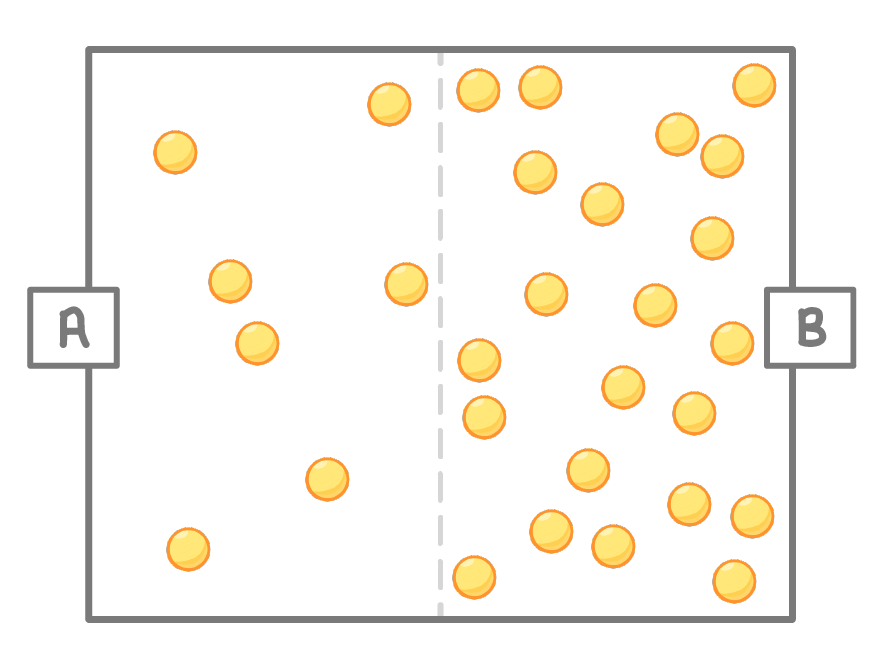Diffusion
This lesson covers:
- How diffusion works
- How diffusion applies to cell membranes
- The factors that affect the rate of diffusion
Diffusion is the net movement of particles from an area of concentration to an area of concentration.
|

In which direction will diffusion take place between area A and area B?
From area A to area B
From area B to area A
|
True or false? If molecules are left alone they'll move around randomly.
True
False
|
In which of the following states can molecules diffuse?
(Select all that apply)
Gas
Liquid
Solid
|
Cell membranes are said to be 'partially permeable'. What does this mean?
No molecules can pass through the membrane
Only some molecules can pass through the membrane
Any molecule can pass through the membrane
|
Which molecules are able to diffuse into and out of cells?
Proteins
Glucose
Water
Starch
Amino acids
|
List three factors that affect the rate of diffusion.
|
Will a larger surface area increase or decrease the rate of diffusion?
Increase
Decrease
|
Why does a higher temperature increase the rate of diffusion?
|